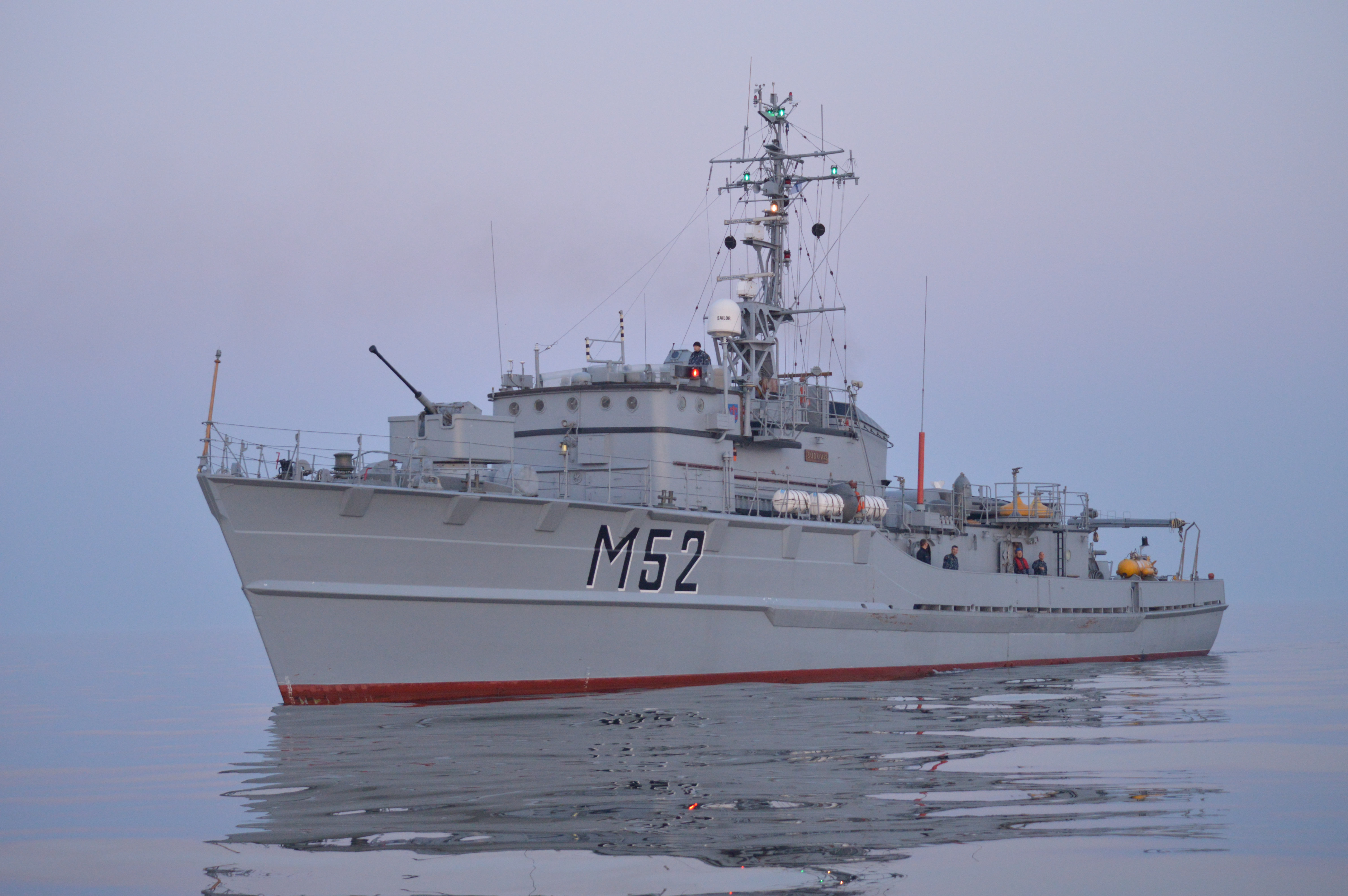SHIP: The boat deck is a space on board above the main deck, where ship’s two boats are waiting for their tasks at sea. At both sideboards, machinegun sites are ready to meet the exercise actions. After returning to the shore, the weapons quietly return to the safe arsenal of the ship. The ventilation shaft next to the funnel is the flow of life that cools down powerful engines below, maintaining the energy and rhythm of the ship, even when the sea boils because of the challenges.
SIGNALMAN (SOUNDMAN): Here we are.
SHIP: The Baltic Sea, though relatively small and shallow, has always been an attracting strategic place. Many different subjects mined its waters to block enemy ships, thus preventing their navigation. Its waters are still hiding many mines. The de-mining operations will be performed here for several more decades. I was here, with my crew, protecting this sea, cleaning the seaways.
COMMANDER OF THE SHIP: Many things happened during the sea voyages – joy, anxiety and challenges alike.
SYSTEM ENGINEER: And, of course, sea-sickness is an unavoidable companion.
ARTILLERIST: And also the longing. Longing for family and relatives, when ceaseless waves are all around and the shores seem to be so distant.
COMMANDER OF THE ELECTROMECHANICAL COMBAT UNIT 2: Due to constant breakdowns, the service of “Sūduvis” was terminated. However, she was not destroyed – the ship was handed over to the Lithuanian Sea Museum, and her history continues.
CHIEF SUPPLY CHAIN OFFICER: I am happy to contribute to the preservation of the history of “Sūduvis”. This is our history. I dream of a day when I will visit this site with my grandchildren and show them, “I was here, I was part of this.” I want the ship to live on to allow future generations enjoy her.
COMMANDER OF THE SHIP: We will never forget how our “Sūduvis” was talking to us surrounded by the sea waves. She was narrating her saga of the sea – a strong, unbreakable, just like her crew. The Captain Lieutenant Vytautas Šakalis once said, “Sūduvis” would never pass through the degaussing of the ship because her crew was made of iron.” And it was this crew, its strength and determination that was the true engine of the ship.
SHIP: Perhaps I may not navigate anymore, but my soul – this iron link to the crew – will remain forever. And even when my hull will be standing still, I will be here, reminding of those years at sea, of those who navigated with me through the waves and storms.
SHIP: My service is over.
In 2021, the ship ended her service and was handed over to the Lithuanian Sea Museum, which, after adjusting the ship to museum and educational activities, invites the general public to explore the history of the ship and the crew. For every visitor, it is a unique opportunity to think about the value of the maritime state and remember that the maritime culture is an integral part of us.
Creative team of the project:
Mindaugas Žvirgždys (author of the concept and text)
Virginija Rimkaitė (author of the script)
Kristijonas Lučinskas (composer, sound engineer)
Mikalojus Urbonas (voice of the protagonist)
Vitalijus Aleksandravičius (chief supply chain officer – ship’s boatswain)
Andrius Kiela (systems engineer)
Darius Auškelis (chief systems engineer)
Justas Žaglinskis (chief of the electromechanical combat unit 1)
Tomas Abromavičius (chief of the electromechanical combat unit 2)
Edgaras Padimanskas (cook)
Rimantas Preimantas (Commander of the ship)
Andrius Galdikas (soundman and chief signalman)
Andrius Riauka (chief wheelman navigator)
Marius Safonovas (artillerist)
Dainius Jurevičius (diver)
